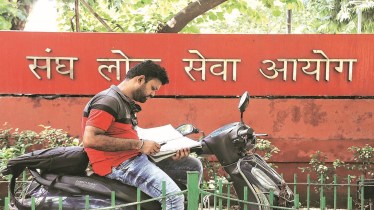By Amitabha Bhattacharya
The need for reforming our civil services to enable them to serve the people better is not questionable. Numerous reports have been highlighting problematic issues and the need to address them urgently. Substantive works have been published on the subject, the latest ones including State Capability in India by TV Somanathan and Gulzar Natarajan (Oxford, 2022), and As Good As My Word: A Memoir by KM Chandrasekhar (HarperCollins, 2022). However, the seriousness to comprehensively confront the problems has been missing, attempts to reform having been sporadic and often half-hearted.
Lately, some concerted actions have been initiated, such as lateral entry at the joint secretary level, amending the Prevention of Corruption Act, retiring the undesirable elements prematurely by invoking the relevant rule, and, above all, launching of the Mission Karmayogi towards ‘citizen centric and future ready civil service’. The book under review seeks to extend this discourse.
Also read: Kick chewing, smoking, and vaping for a healthier you
Although edited volumes dealing with such a complex matter often end up as a potpourri of disparate articles of uneven quality, uninformed by a central design, certain features of this book make it different.
Firstly, the authors have been chosen both from within the ‘system’ and without. Consequently, the perspectives of retired civil servants have been complemented by those of eminent private sector leaders having reasonable knowledge of how the government functions.
Secondly, the term ‘Steel Frame’ has been used to cover the role both of the IAS (and by implication, other higher civil services), as also of all civilian employees of the government.
Thirdly, many of the essays suggest constructive ways to move forward. The easy trap of lamenting the perceived fall in standard of governance and increase in spread of corruption, and offering inane solutions has often been avoided.
Finally, despite the uneven quality of essays, some are brilliant by any standard, while others, generally impressionistic and conventional, provide competent summaries and updated information on the subjects surveyed. Rai’s introduction seeks to link the pieces.
Among the contributions by retired bureaucrats, the one by Deepak Gupta, former chairman of UPSC, merits special attention. Highlighting how the search for excellence conflicting with political populism (couched in the language of ‘sociopolitical compulsions’) affected the structure and quality of our higher civil services, Gupta convincingly argues, as some other observers had in the past, why and how the maximum age limit and number of attempts allowed for civil service aspirants be substantially reduced across the spectrum, how the common examination should be modified by doing away with ‘all subject-optional papers’, and how the federal character of the All-India Services is being compromised.
Gupta does not shy away from other contentious issues like shortage of IAS officers, generalist vs specialist debate, and the much publicised lateral entry of subject-matter specialists. As he notes, “Lateral entry should therefore not be considered as a general panacea to overcome system faults… Used selectively, it could benefit in limited areas. Used liberally, it could completely destroy the system.” And he explains why he thinks so.
Citing ‘Civil Services Survey: A Report 2010’ in which junior officers have commented that post-retirement posts being offered to select retiring bureaucrats is an important reason for the ‘spinelessness of senior civil servants’, Gupta suggests a practical way of dealing with the problem.
Pradeep Kumar, former central vigilance commissioner, discusses how to ensure integrity and fight corruption within the civil services and recommends a new Act to replace the existing Special Police Establishment Act, “in tune with the needs of the present times…”
Former chief election commissioner N Gopalaswami underscores the importance of electoral process reform, stewarded by the civil services, stressing that “critical areas of electoral reforms do not seem to be a priority for political parties and governments.” The essays by Sanjeev Chopra, Satyananda Mishra, Prajapati Trivedi, Pushpendra Rai and Vinod Rai also focus on some pertinent issues.
There is an air of freshness and boldness in some of the articles by those outside the sarkari system. S Ramadorai’s essay is particularly interesting. He argues for mainstreaming lateral entry to bring in ‘missing skills’, warning, however, that such an attempt “carries the risk of remaining unfulfilled when those people struggle once inside the establishment”. His other recommendations include making “civil services a career option after 12th”, and deputing civil servants to private, non-governmental and grassroots organisations, as in countries like the US and France.
Manish Sabharwal, favouring large-scale disinvestment of PSUs, suggests their supervision be transferred to a holding company or a restructured Department of Investment and Public Asset Management.
Quoting Arun Maira that “the government’s job is not to make profit, it is to improve the world for everyone”, Naina Lal Kidwai argues for joint efforts by government/bureaucracy and corporates, as also for mindset reforms among civil servants. Giving specific examples from Bengaluru, Kiran Mazumdar-Shaw underscores the need for citizen-administration partnership.
Though peripherally touched upon, some ‘hard’ questions remain unexplored. Why the higher echelons in the bureaucracy still remain risk-averse? Is it because indecision that may cost the nation heavily is considered safer than taking a quick decision that may be questioned later, exposing officials concerned to endless harassment? Should constitutional authorities expand their turf that may impede bonafide executive action? How to develop a framework that would deter sycophancy and the toxic nexus between pliable officials and their political superiors? How to collect and use Big Data to objectively assess the performance of officers and institutions?
Nevertheless, the book provides a fair and balanced picture of what ails our governance system and how best to improve upon it through modification of the existing processes and strengthening of the human capital.
Transforming the Steel Frame: Promise and Paradox of Civil Service Reform
Vinod Rai
Rupa Publications
Pp 256, Rs 595
Amitabha Bhattacharya is a former IAS officer who has also worked in the private sector and with the UNDP.
